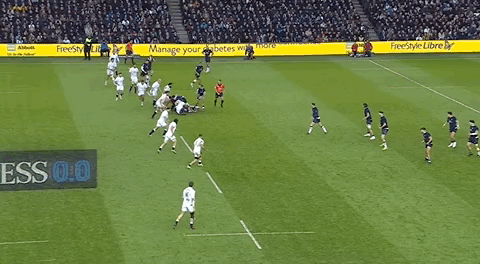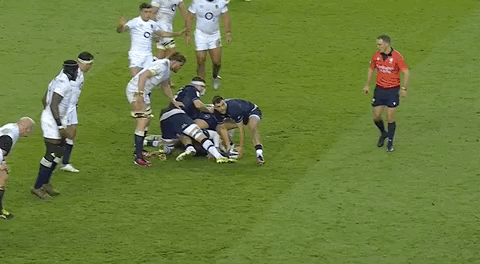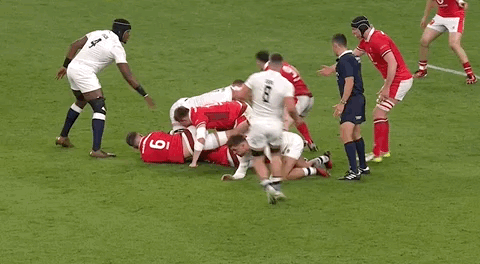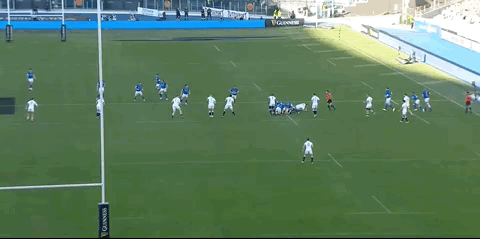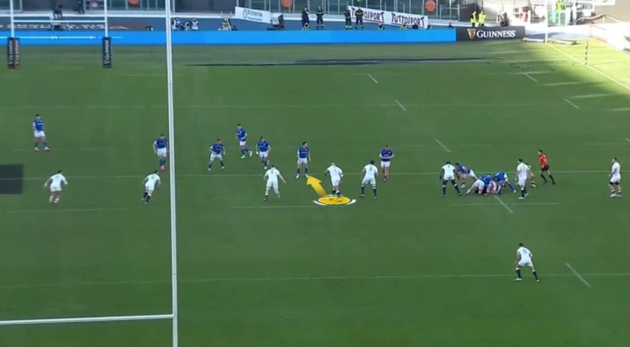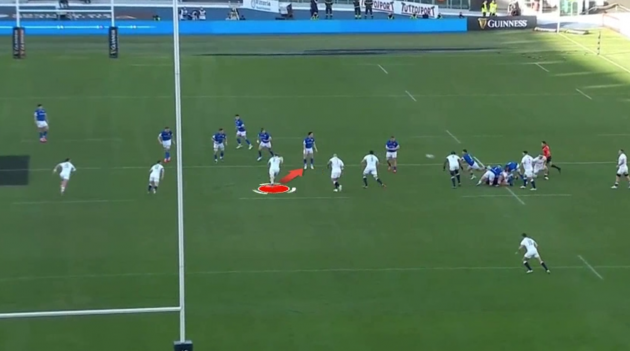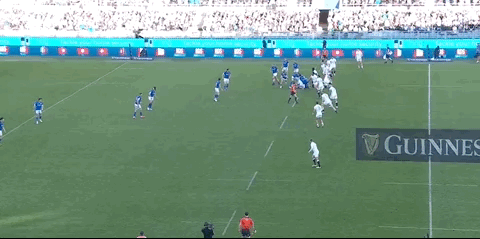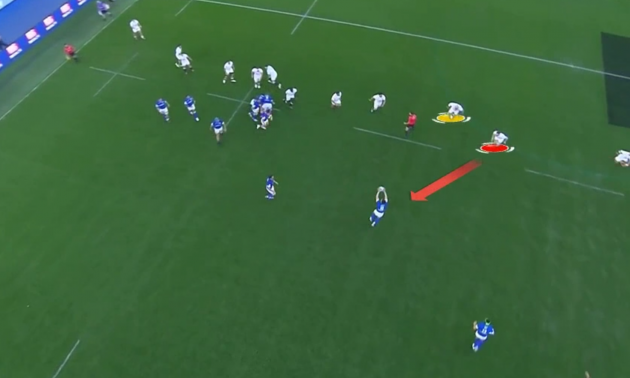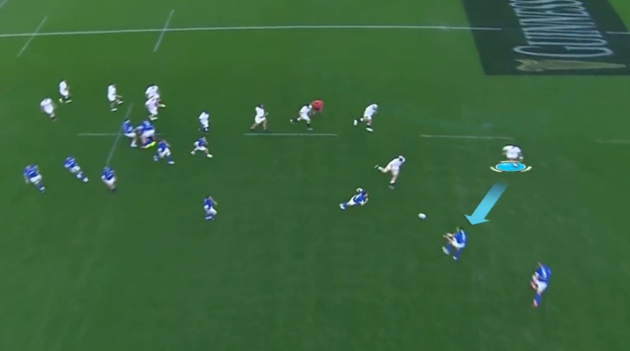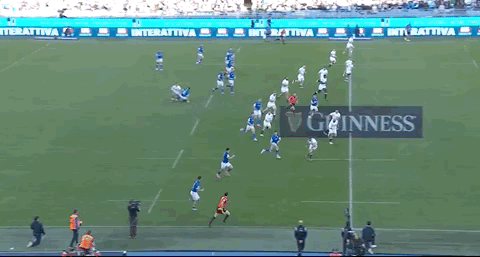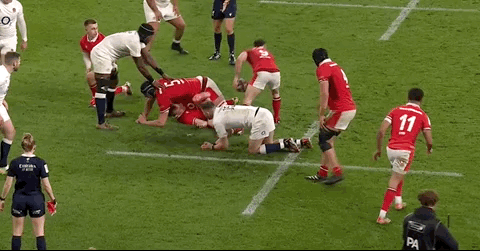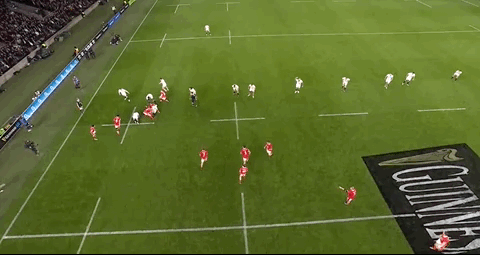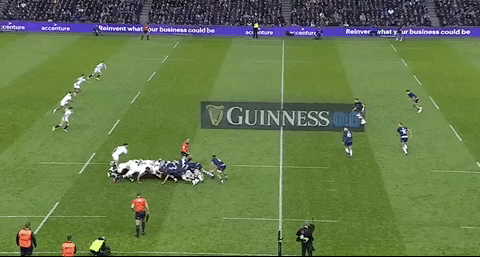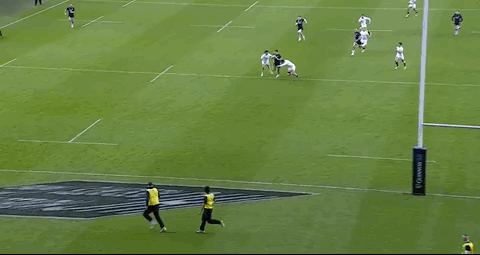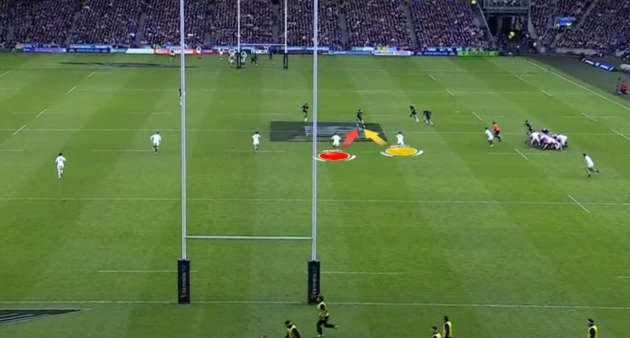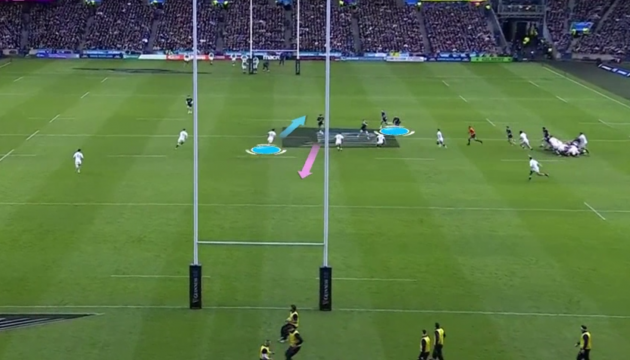GIVEN THAT JACQUES Nienaber warned us it would take 14 games for Leinster’s new defence to click, we can safely say that England’s defence under Felix Jones is some way off being the finished product.
In his new role as England’s defence specialist, Jones is implementing an ultra-aggressive system that looks extremely similar to what Nienaber ran with the Springboks and is now implementing in Leinster.
And as has been the case with Leinster, there have been teething problems for England as they’ve gone about changing how they defend during a competition window. Yet while there is obvious room for improvement, they’ve been doing some good stuff too.
So far in this Six Nations, England have conceded eight tries, which is only slightly above average. They’ve given up 14 linebreaks in their three games, which is just under the average, according to Opta’s data.
England have the lowest tackle completion rate but we know that’s not a metric the likes of Nienaber and Jones worry about. They appreciate that their players will miss tackles when being asked to come forward at such speed.
A more relevant statistic for Jones is how often England force turnovers from the opposition attack. This is where there can be so much payoff in the linespeed. In terms of turnovers won, England lead the Six Nations so far with 16.
Add in the fact that only Ireland have made fewer passive tackles – where the ball-carrier dictates the collision – than England and Jones is likely to be pleased with how things have gone so far.
Of course, his defence faces its toughest test yet in two weekends when the at-times scintillating Irish attack comes to Twickenham. The battle between England’s all-out, oppressive linespeed and Ireland’s connected, clever passing game could be riveting.
Jones knows that England will need to jump a few levels so the second break week comes at an ideal time, allowing them to regather and put in place a detailed plan for Ireland. He was a central part in planning for the Irish attack only a few months ago with the Springboks at the World Cup.
Ireland will expect relentless aggression from the English defence. In the instance below, we can see that the English are numbers down on their right-hand side of the ruck but refuse to sit off in defence.
As they come forward in a bid to shut down Scotland out-half Finn Russell’s passing options, he steps and tries to play in behind them but lock Ollie Chessum makes good contact to force the knock-on.
In the instance below, flanker Sam Underhill bursts off the line to apply pressure, forcing an inaccurate pass from Scotland hooker George Turner.
Again, England’s aggression earns them a turnover.
England are down to 13 players in the next example, having seen two men sin-binned.
Yet even as Wales attempt to play out from deep, England keep coming forward in defence.
Outside centre Henry Slade stops opposite number George North behind the gainline and suddenly England are contesting for a breakdown turnover.
Though Wales recycle, England continue to swarm them on the next phase, with second row Maro Itoje snaffling Welsh out-half Ioan Lloyd.
With the ball unplayable, England are awarded a turnover for going forward in the tackle and they score directly from the ensuing scrum, number eight Ben Earl smashing over even with his side still down to 13.
It takes an explosive carry to finish but Jones was likely congratulated by his fellow coaches for the defence delivering this crucial converted try in England’s 16-14 win.
England’s players appear to be enjoying the license to blitz forward with huge linespeed but English aren’t always getting it right.
It’s probably a source of frustration for Jones that they have been beaten right through the guts of the defence on several occasions, even if he was surely aware that a big change in a short space of time would mean some big errors.
Below, we see England getting cut by some smart Italian attack.
In many defensive systems, the third defender out from the ruck is tasked with tackling the opposition’s first receiver.
So in this instance, it would be prop Joe Marler [yellow below] who’d have to get to Italy out-half Paolo Garbisi.
We don’t know exactly what Jones’ system demands in these situations but in this instance, it’s Chessum [red below] who hammers up and in on Garbisi, leaving his team-mates behind as he races forward in a bid to hit Garbisi ball-and-all before he can pass.
Yet while Chessum comes up and in onto Garbisi, inside centre Fraser Dingwall doesn’t adjust all the way in onto the next Italian attacker. Instead, Dingwall [blue below] advances onto the second-next Italian attacker.
That means Italy centre Juan Ignacio Brex [pink above] has a sliver of space to run into as Garbisi gets the ball away before Chessum hits him.
So while we don’t know the exact roles that Jones specifies for each player in these situations, we can see that Chessum’s aggression in coming forward is not matched by a swift adjustment on either side to compensate for him creating disconnection.
Italy score directly from this linebreak to take an early lead.
Given that Ireland are the best short passing team in the world, England will need to avoid giving them opportunities like this one at Twickenham.
Later in the first half in Rome, there’s another instance of Chessum thundering up in a bid to stop the ball but getting beaten.
In truth, the glaring issue for England here is that they have five defenders [white below] in the shortside marking up on pretty much nothing.
So many defensive shortcomings begin with poor ‘fold/hold’ decisions. That means players deciding to fold around the corner to the other side of the ruck or holding their position where they are. These decisions are crucial in defence.
Here, the failure to fold means England don’t have sufficient defenders in the line on the other side of the ruck. Even still, they refuse to sit off passively in defence.
Marler [yellow below] is the third defender out from the ruck but again, Chessum [red] just outside him hammers up and in.
As Garbisi gets the ball away before Chessum closes in, Slade [blue below] now has to step in and England are skirted on the outside.
The Springboks are superb at scrambling after their defence has been skirted out on the edge, with ‘catch-up’ defenders working incredibly hard from the inside.
But England can’t catch up here as the Italians finish in slick fashion.
There was another instance of England’s defence conceding a try after the attack played through them in the narrow win over Wales.
As we can see below, a tip-in pass from Wales prop Gareth Thomas gives flanker Tommy Reffell enough space to get his hands through for an offload inside to scrum-half Tomos Williams.
Williams is calm in behind to draw the last defender and send flanker Alex Mann over.
This try is the conclusion of a long passage of ball-in-play time of nearly two minutes and England’s fatigue seems to tell as have issues with their ‘spacing’ close to the ruck.
The angle below shows how exposed England prop Will Stuart [the middle player in the chain of three] is as Wales spy the chance for the tip-in pass.
Lock Maro Itoje is hovering behind the ruck, rather than stepping up to the fringe of it on Stuart’s inside, so Stuart is incentivised to stay slightly tighter to the ruck himself. Outside him, there’s a five-metre gap to the next defender, flanker Ethan Roots.
We can also see above how closely space Roots and next defender Earl are, such a contrast to the spacing between Stuart and Roots.
For Wales, the space between Stuart and Roots is an invitation and they take full advantage.
Again, Jones knows how good Ireland are with this kind of interplay close to the ruck and will be stressing the need for ideal spacing and relentless effort so England don’t leave themselves open to being played through.
All of these examples come in phase play defence and given that Ireland’s superpower is their phase play attack, England will need to be very sharp.
Ireland’s set-piece attack is clever too and so Jones will have been working with his backs to review the circumstances of their first try concession against Scotland.
On a fairly standard 9-12 play off the scrum, inside centre Sione Tuipulotu puts Huw Jones away on a linebreak.
England scramble to tackle Jones but his offload off the deck finds Duhan van der Merwe and the big left wing finishes confidently.
The English 10-12-13 combination of George Ford, Ollie Lawrence, and Slade is an unfamiliar one and it seems to tell in this instance.
Ford [yellow below] is tasked with getting to first receiver Tuipulotu to tackle him but the Scottish centre’s clever footwork worries opposite number Lawrence [red] who ends up sitting down on Tuipulotu, concerned about the carry threat.
In some defensive systems, England outside centre Slade might not rush forward at such high speed here, instead advancing more slowly in case he needs to adjust inwards.
But Slade [blue] is already racing up out the back of opposite number Jones, eyeing up the possibility of Tuipulotu passing out the back to out-half Russell [also in blue].
That means that as Tuipulotu fixes Lawrence, he can pass to Jones [pink above] running into the space in between England’s centres.
It’s nice play from Scotland’s attack but England will probably have felt that it was too easy on first phase of a scrum attack.
Again, Ireland’s decision-making means they generally hoover up any chances like this one.
For that reason, England will need to be at a new level of accuracy as they look to shut Andy Farrell’s side down. One thing is for certain – England will keep coming forward in a bid to ruin Ireland’s Grand Slam bid.


